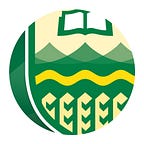The spacemen
Garry M. Lindberg and Lloyd Pinkney played a major role in advancing Canada’s space program
H.F. Lloyd Pinkney (’52 Eng) and Garry M. Lindberg (’60 BSc Eng) played pivotal roles in creating Canadarm and the International Space Station.
Garry M. Lindberg was born near Rimbey, Alta., in 1941, and graduated from the University of Alberta in 1960. Following graduation he went to Cambridge University, where he completed his PhD in engineering mechanics. When he returned to Canada in 1964, Lindberg joined the National Aeronautical Establishment of the National Research Council (NRC).
In 1974, Lindberg was named project manager of the Shuttle Remote Manipulator System (SRMS), or Canadarm, the most well-known Canadian accomplishment in space. Making its debut on the Space Shuttle Columbia in 1981, the Canadarm enabled Canada to become a major player in human space flight and a leader in robotics innovation. After 90 shuttle missions, the Canadarm was retired in July of 2011.
Lindberg went on to serve as director of the National Aeronautical Establishment, where he oversaw the creation of the Canadian Astronaut Program. He became the executive director of the space division of the NRC in 1986 and played a key role in establishing the Canadian Space Agency in 1989, serving as its vice-president of research and applications until his retirement in 1997.
Lindberg received a Distinguished Alumni award from the U of A in 2008 and an honorary doctorate in 2012. In 2017 he was appointed as a Member of the Order of Canada.
Internationally renowned in the field of engineering physics, Lloyd Pinkney, (’52 Eng) was the principal investigator of the Space Vision System, a stellar breakthrough in space technology. He played a tremendous role in advancing Canada’s role as a leader in space technology.
Lloyd was born in Blairmore, Alta., in 1931, and graduated from the U of A in 1952. He then began a 44-year career with the NRC, where he was involved with numerous projects with the Institute of Aerospace Research and the Integrated Manufacturing Technologies Institute. While working at the NRC, he completed his master’s and PhD in engineering mechanics at Stanford University.
It was during his time with the NRC that Pinkney was involved with leading the Space Vision System. The SVS was based on the real-time photogrammetry system that he co-designed in the early 1970s. His work on the SVS, a vision system for robotic devices such as the Canadarm, was considered a major advancement in space technology. The SVS enables the Canadarm and Canadarm2 to handle payloads that are out of sight to astronauts operating these two giant robotic arms. It also played an essential role in the construction of the International Space Station.
Lindberg received a Distinguished Alumni award from the U of A in 2008.
Lindberg and Pinkney met on Jan. 13, 1964, on Lindberg’s first day working for the NRC. Through their shared alma mater, professional interests and carpooling to and from work, the two became lasting friends. Lloyd Pinkney passed away May 3, 2014, at the age of 83.
For almost as long as there’s been a Canada, there’s been a University of Alberta. Over the next year, in honour of Canada’s 150th anniversary, we’re proudly celebrating the people, achievements and ideas that contributed to the making of a confederation.
